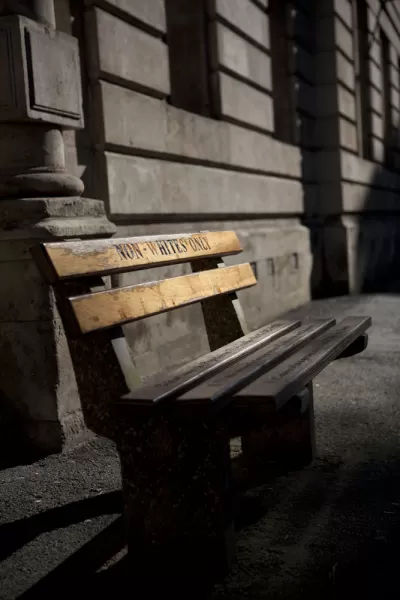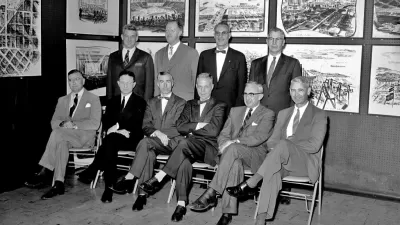Redlining has been around for a long time, but across the country, local, state, and federal agencies are filing complaints against banks and other corporations for creative and subtle new forms of discrimination.

No longer are redlining cases limited to the more traditional forms of geographic discrimination, such as denying housing loans or refusing to deliver food. Brentin Mock points to a series of recent cases that "show that not only is redlining alive today, but that it’s also evolved in many cases into racist practices that aren’t as detectable as they were during Jim Crow."
A recent settlement between the federal government and the Hudson City Bank is the largest of its kind in history. The Justice Department determined that the bank was engaged in redlining by its failure to open branches in and market to minority neighborhoods.
"The bank didn't accept mortgage applications at all of its branches, requiring some borrowers to travel to locations that happened to be farther away and in overwhelmingly white communities. The bank also offered a home improvement loan program for low-to-moderate income families, but the advertising for it specified that closings could only occur at one branch. It was in Fairfield, Conn., where the median income is $117,000 and the population is 92 percent white," writes Emily Badger.
Evans Bank in Buffalo recently settled with the state of New York after it was found that the regional bank had omitted the predominantly black east side from it's lending maps. "Rival banks, the authorities said, lent far more generously, suggesting that Evans's pattern of lending did not arise from an absence of willing borrowers," write Jessica Silver-Greenberg and Michael Corkery.
A less explicit but perhaps equally red flag for redlining is a new bank app that could soon be on the market, which would allow lenders to assess a loan applicants creditworthiness based on his/her stock of Facebook friends. "Still, if this ends up not flying, there’s no reason to think that banks won’t find some other application to filter out undesirable borrowers," writes Mock. "After all, the history of discrimination in the U.S. is one of metamorphosis."
FULL STORY: Redlining is Alive and Well—and Evolving

Planetizen Federal Action Tracker
A weekly monitor of how Trump’s orders and actions are impacting planners and planning in America.

DARTSpace Platform Streamlines Dallas TOD Application Process
The Dallas transit agency hopes a shorter permitting timeline will boost transit-oriented development around rail stations.

Congressman Proposes Bill to Rename DC Metro “Trump Train”
The Make Autorail Great Again Act would withhold federal funding to the system until the Washington Metropolitan Area Transit Authority (WMATA), rebrands as the Washington Metropolitan Authority for Greater Access (WMAGA).

Supreme Court Ruling in Pipeline Case Guts Federal Environmental Law
The decision limits the scope of a federal law that mandates extensive environmental impact reviews of energy, infrastructure, and transportation projects.

Texas State Bills to Defund Dallas Transit Die
DART would have seen a 30% service cut, $230M annual losses had the bills survived.

Bikeshare for the Win: Team Pedals to London Cricket Match, Beats Rivals Stuck in Traffic
While their opponents sat in gridlock, England's national cricket team hopped Lime bikes, riding to a 3-0 victory.
Urban Design for Planners 1: Software Tools
This six-course series explores essential urban design concepts using open source software and equips planners with the tools they need to participate fully in the urban design process.
Planning for Universal Design
Learn the tools for implementing Universal Design in planning regulations.
Roanoke Valley-Alleghany Regional Commission
City of Mt Shasta
City of Camden Redevelopment Agency
City of Astoria
Transportation Research & Education Center (TREC) at Portland State University
US High Speed Rail Association
City of Camden Redevelopment Agency
Municipality of Princeton (NJ)





























